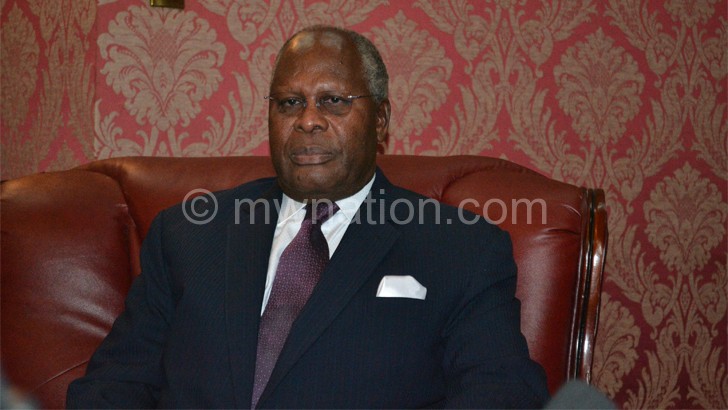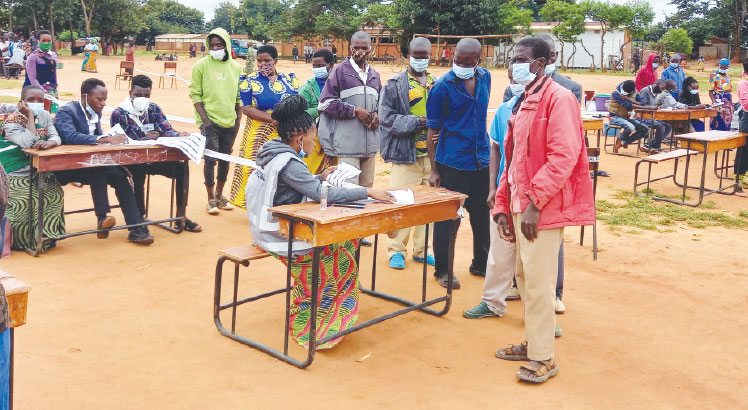Then there was Vision 2020
Five years from today, Malawi’s long-term development blueprint, the Vision 2020, will phase out. But—as our news analyst EPHRAIM NYONDO begins in the first part of series on Vision 2020—what was it about, why was it developed and where is it right now?
The jingle is short—just 15 words.
Vision 2020
Kukonza Tsogolo
Pofika 2020
Tizakhale pa bwino
Osayang’ana m’mbuyo
Dziko ndi lathu ili…

In those 15 words, the jingle planted in the hearts of millions a well-crafted message from a 19-paged and 20 000 worded document that Malawi adopted 15 years ago—a message that, whenever stirred, revokes the memories of great seasons of a nation.
Indeed, when the Vision 2020 was being developed—the consultations, the meetings, the media coverage, the jingles, the press briefings, the adverts—there were great seasons of national hope.
It was not hope that sprang from the blues; it was one borne out of pain.
By then, Malawi had high incidence of poverty, high levels of stunting, low life expectancy, high levels of child and maternal mortality and high malnutrition levels. Not only that.
There were high levels of unemployment and underemployment due to limited work opportunities—largely because of low industrialisation, low human capital due to low levels of education and skills development and weak export base characterised by highly concentrated exports—mainly unprocessed agricultural commodities, principally tobacco.

Yet that is not all.
There was, again, dominance of low-productivity smallholder agriculture based on traditional technologies, high incidence of HIV and Aids, environmental degradation and increased gender bias.
In recognition of the need to change the future development destiny for the country, Malawians prepared a long-term shared vision to provide a framework for development planning and management. The process of developing this shared vision began in January 1996 with a study of the development prospects known as Vision 2020.
The then president Bakili Muluzi found development planning as a central explanation Malawi’s poverty.
“Development planning in Malawi has since independence in 1964 been guided by short to medium terms plans,” he explained in his foreword to the Vision 2020 document.
He added that this approach, however, has resulted in limited social and economic progress.
“Poverty has become widespread, provision of social services has increasingly become inadequate, and food insecurity has increased. This situation has been worsened by the high prevalence of HIV and Aids. In addition, macroeconomic variables like government budget deficit and the balance of payments have not been satisfactory,” he said.
Muluzi feared that Malawi risked losing some of the progress made, if the prevailing trends were not arrested. He noted, as a solution that, in the absence of long term shared vision, “it will be very difficult to make meaningful progress”.
It is against this background that Vision 2020 was born—a long term development plan that Muluzi insisted “should not be a mere slogan, rather it should evoke our determination to create a better future for Malawi”.
But what, actually, is Vision 2020?
The then vice-president and minister of finance Justin Malewezi said Vision 2020 is a framework in which Malawi will formulate, implement and evaluate short and medium-term plans.
“It provides detailed background information and justification for the aspirations of the people of the country and the recommended strategies for achieving the aspirations,” he said.
With this framework, he added, government departments and private organisations would be able to prepare detailed projects and activities.
He noted that the Vision “also captures the multispectral nature of development, as it comprises social, cultural as well as political changes.”
The conceptual framework for developing the vision was adapted from the National Long-term Perspective Studies (NLTPS) approach formulated by the African Futures Group in Abidjan, Ivory Coast.
The NLTPS methodology was used as a tool for development management. It emphasised the following conceptual elements: strategic long-term thinking shared vision and visionary leadership, citizen participation, scenario planning, strategic management and national learning.
So consultative was the process of development that even the leader of opposition then, Gwanda Chakuamba, waxed lyrical about it.
“Development of our beautiful country, Malawi, is the responsibility of all citizens who are potential beneficiaries. People enjoy the fruits of their hard work when their aspirations are achieved. The exercise in identifying people’s aspirations, which has culminated in this shared vision, has therefore been an important process,” he said.
He added: “Throughout the country, Malawians have voiced their views on many aspects of our society. They want to have good governance which should embrace transparency, accountability, fairness, and clean politics and devoid of corruption, regionalism and nepotism.
“Malawians also aspire to have their country developed economically in all sectors including agriculture, manufacturing and mining. For our economy to progress, Malawians would like to see to it that the increasing lack of security in the country is curbed. It is also pleasing to note that the people seek environmental conservation. Among their other aspirations, Malawians crave for a vibrant culture, a high standard of education and adequate health services,” he said.
He further added that he had no doubt “we all agree that these are noble objectives and Malawi Vision 2020 therefore, presents a challenge to the present government and all future governments”.
Development specialist professor Blessings Chinsinga underlines, however, that the Vision 2020 was not meant to provide details of policies or projects and activities that have to be implemented.
“It is mainly meant to provide the guiding framework for subsequent specific policies,” he said.
KEY FACTS
Vision Statement
By the year 2020, Malawi as a God-fearing nation will be secure, democratically mature, environmentally sustainable, self reliant with equal opportunities for and active participation by all, having social services, vibrant cultural and religious values and being a technologically driven middle-income economy.
Objective of the Vision
The main objective of Malawi’s Vision 2020 is to help the Government, private sector and the people of Malawi to embark on a development path that arises out of the consensus from the NLTPS process. The Vision provides the framework for national development goals and the policies and strategies to achieve them.
Strategic Challenges for Malawi
Based on the discussions held it was agreed that Malawians cannot achieve the proposed Vision unless they successfully make certain achievements. The issues raised were defined under the following sub topics;
Good Governance
Achieving Economic Growth and Development
Achieving a Vibrant Culture
Developing Economic Infrastructure
Food Security and Nutrition
Human Resource Development and Management
Achieving Science and Technology-Led Development
Fair and Equitable Distribution of Income
Natural Resource and Environmental Management.





